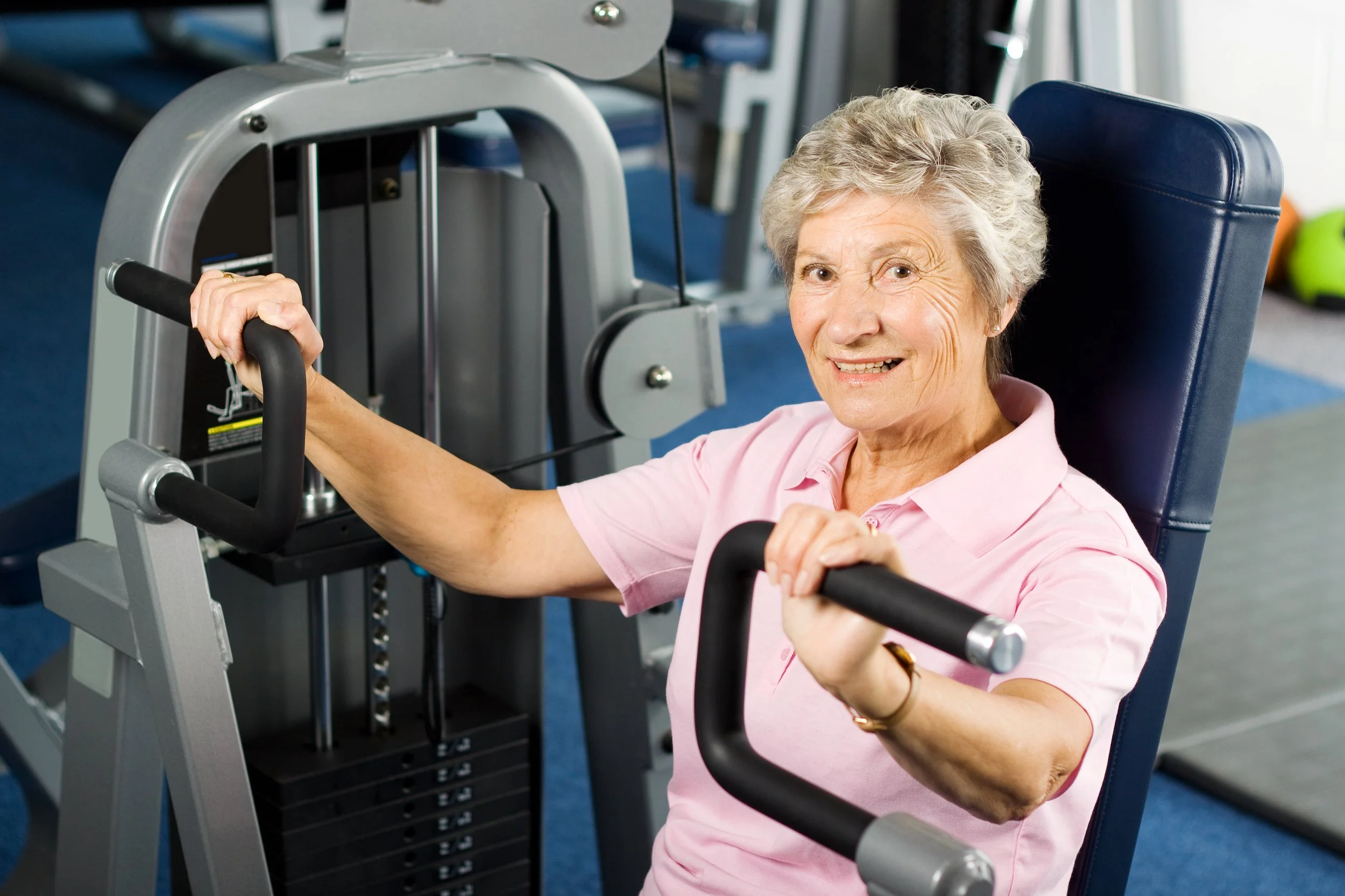How Lifting Weights Supports Healthy Aging
Aging is inevitable—but the way we age? That’s something we have the power to influence. For many, the image of growing older conjures up thoughts of slowing down, losing strength, and facing a gradual decline in vitality. But what if aging could look different? What if you could stay strong, mobile, independent, and vibrant well into your 60s, 70s, 80s, and beyond?
That’s where lifting weights comes in.
Often misunderstood as something only for bodybuilders or young athletes, resistance training is actually one of the most powerful tools we have for aging gracefully. Not only does it build strength, but it helps preserve independence, improves bone health, sharpens the mind, and even boosts longevity.
Let’s dive deep into how lifting weights can be your secret weapon for living a longer, healthier, and more empowered life.
1. Muscle Mass: The Fountain of Youth
After age 30, adults lose an average of 3–8% of muscle mass per decade—a condition called sarcopenia. Left unchecked, this decline accelerates as we get older. Muscle isn't just for movement or looking fit; it’s essential for maintaining metabolic health, joint support, balance, and independence.
Weight training slows or reverses sarcopenia. When you challenge your muscles with resistance, your body responds by building and maintaining muscle tissue. For older adults, this can mean the difference between being able to lift groceries or climb stairs—and not.
And here’s the good news: it’s never too late. Studies show that even individuals in their 70s, 80s, and 90s can build muscle and strength through consistent resistance training.
2. Strong Bones, Fewer Breaks
Osteoporosis—the gradual loss of bone density—is another major concern with aging, especially for women post-menopause. Fragile bones increase the risk of fractures from even minor falls, leading to hospitalizations, long recoveries, and sometimes permanent loss of independence.
Lifting weights puts healthy stress on bones, stimulating them to grow stronger. It improves bone mineral density, especially in the hips and spine—two common areas of fracture in older adults.
While walking and swimming are great for the heart, they don’t provide the kind of load-bearing stimulus bones need. That’s where strength training shines.
3. Improved Balance and Fall Prevention
Falls are the leading cause of injury among older adults, and the risks grow with age. But balance isn’t just about coordination—it’s also about strength. Strong legs, hips, core, and back muscles create the foundation for good posture and stability.
Weight training improves proprioception (your body’s ability to sense its position in space), coordination, and joint control. It also builds core stability and reinforces the muscles around the knees, hips, and ankles, all of which are crucial for preventing falls.
4. A Faster Metabolism and Healthy Body Weight
With age, metabolism naturally slows. We burn fewer calories at rest, making it easier to gain weight and harder to lose it. But here’s the key: muscle is metabolically active tissue. The more lean muscle mass you have, the more calories you burn—even while sitting.
Weight training helps preserve and build lean muscle, giving your metabolism a boost. Combined with a healthy diet, resistance training makes it easier to maintain a healthy body weight and reduce body fat, especially dangerous visceral fat that surrounds internal organs.
5. Heart Health and Blood Sugar Control
It might surprise some people to learn that weight lifting also has cardiometabolic benefits. Resistance training improves insulin sensitivity, which helps regulate blood sugar—an especially important factor in preventing or managing type 2 diabetes.
It also contributes to improved blood pressure, cholesterol levels, and circulation, lowering your risk of heart disease and stroke.
And when paired with aerobic activity like walking, swimming, or biking, the combination provides comprehensive protection for your heart and vascular system.
6. Brain Benefits and Mood Boosts
Weight training isn’t just about the body—it’s good for your mind too.
Resistance training has been linked to improved cognitive function, memory, and processing speed. It’s thought to stimulate brain-derived neurotrophic factor (BDNF), a protein that supports brain health and neuroplasticity.
On top of that, lifting weights triggers the release of feel-good chemicals like endorphins and serotonin, reducing symptoms of depression and anxiety. The sense of achievement that comes from getting stronger, lifting heavier, or simply moving better also enhances confidence and mental resilience.
7. Better Sleep and Energy Levels
Sleep often becomes more fragmented with age, but resistance training can help. Studies show that older adults who lift weights fall asleep faster, sleep more deeply, and wake up feeling more refreshed.
And with improved sleep comes more daytime energy. Many older adults who start a strength routine report having more vitality and stamina in their daily activities.
8. Independence and Quality of Life
Perhaps the most compelling reason to lift weights as you age is this: independence.
The ability to carry groceries, rise from a chair, play with grandkids, tend to a garden, or travel without assistance—these are the things that define a high quality of life in later years. Strength training directly supports all of them.
It builds confidence in your body, empowers you to stay active, and reduces your dependence on others or mobility aids.
9. It’s Never Too Late to Start
One of the most powerful truths about strength training and aging is this: you can start at any age and still reap the benefits. Whether you’re 40, 60, or 85, your muscles will respond.
You don’t need a gym membership or fancy equipment either. Bodyweight exercises, resistance bands, dumbbells, or household objects can all be used effectively. The key is consistency, progression, and doing movements that challenge your muscles safely.
A well-rounded strength program includes exercises for all major muscle groups, done 2–3 times per week. Consulting with a qualified trainer—especially one experienced with women over 40 —can help you get started confidently and safely.
Conclusion: Strength Is Ageless
Aging doesn’t have to mean decline. It can mean empowerment, strength, and vitality. Lifting weights is one of the most powerful, science-backed ways to maintain your independence, protect your health, and enhance your quality of life as the years go by.
So whether you’re already active or just beginning your journey, don’t underestimate the power of picking up those weights. It’s not about building bulky muscles—it’s about building a future where you stay strong, capable, and fully alive.
Strength has no age limit. Start today, and let every rep be an investment in your future self.





